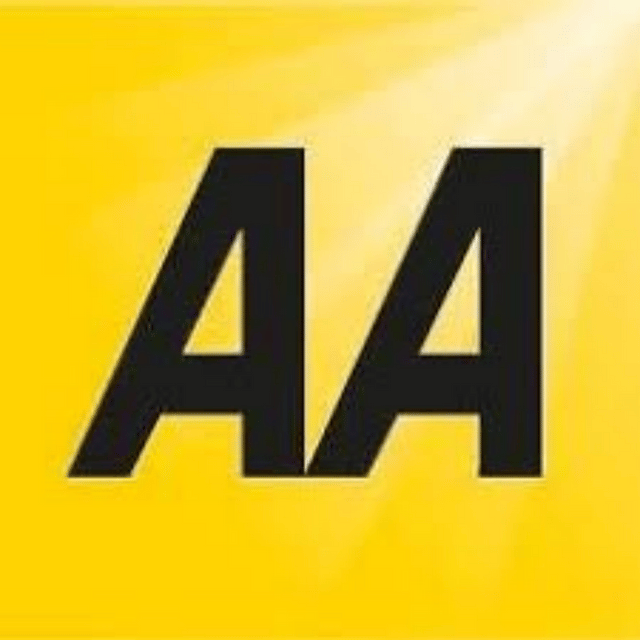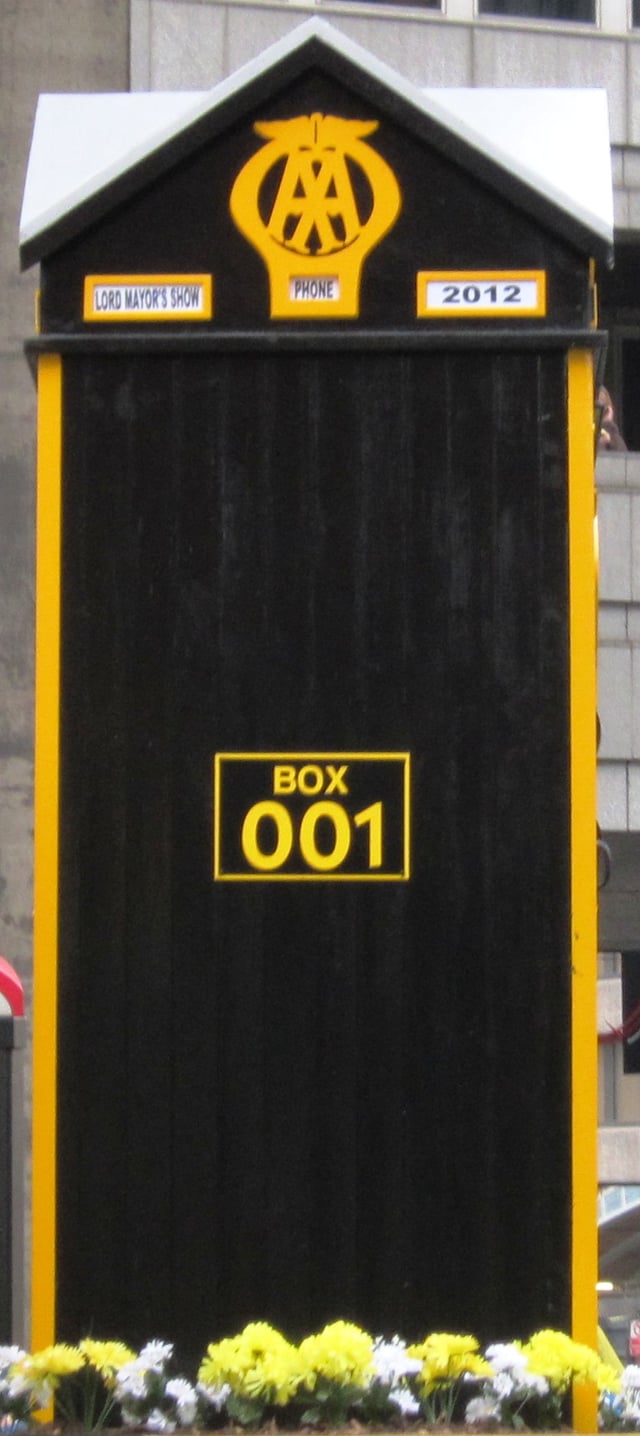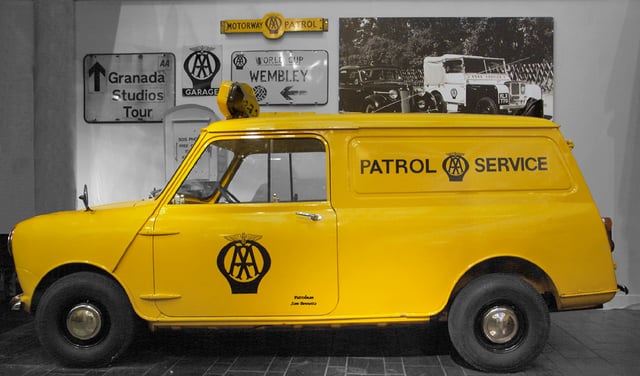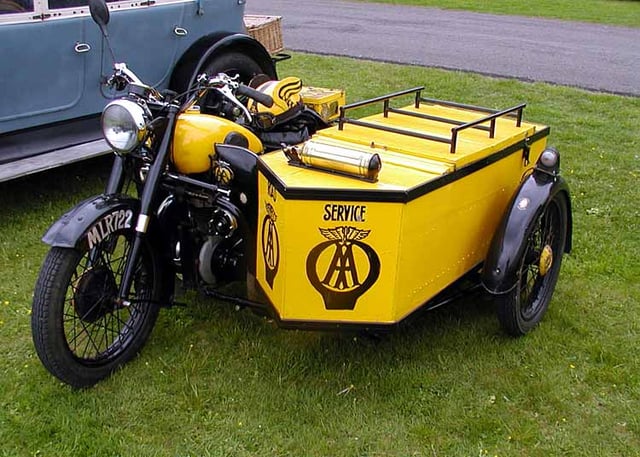The Automobile Association

The Automobile Association

Trade name | The AA [1] |
|---|---|
Type | Public |
| Traded as | LSE: AA. [41] FTSE 250 Component |
| Industry | Automotive services |
| Founded | 1905 (1905) |
| Headquarters | Fanum House, Basingstoke, United Kingdom |
Area served | United Kingdom |
Key people | John Leach (Chairman) Simon Breakwell (Chief Executive) |
| Revenue | £940 million (2017)[2] |
Operating income | £284 million (2017)[2] |
Net income | £154 million (2017)[2] |
Number of employees | 7,454 (2017)[2] |
| Website | www.theaa.com [42] |
AA plc, trading as The AA (formerly The Automobile Association), is a British motoring association founded in 1905, which currently provides car insurance, driving lessons, breakdown cover, loans, motoring advice, road maps and other services. The association demutualised in 1999, to become a private limited company, and in 2002, the AA Motoring Trust was created to continue its public interest and road safety activities.
It is listed on the London Stock Exchange.
Trade name | The AA [1] |
|---|---|
Type | Public |
| Traded as | LSE: AA. [41] FTSE 250 Component |
| Industry | Automotive services |
| Founded | 1905 (1905) |
| Headquarters | Fanum House, Basingstoke, United Kingdom |
Area served | United Kingdom |
Key people | John Leach (Chairman) Simon Breakwell (Chief Executive) |
| Revenue | £940 million (2017)[2] |
Operating income | £284 million (2017)[2] |
Net income | £154 million (2017)[2] |
Number of employees | 7,454 (2017)[2] |
| Website | www.theaa.com [42] |
History
Charitable association

AA phone box

Automobile Association roadside assistance BMC Minivan

A former AA BSA patrol bike from 1951
The Automobile Association was founded in 1905, to help motorists avoid police speed traps,[3] in response to the Motor Car Act 1903 which introduced new penalties for breaking the speed limit, for reckless driving with fines, endorsements and the possibility of jail for speeding and other driving offences.[4]
The act also required drivers to hold a driving licence (which was obtained without a test on payment of five shillings) and to display a registration plate on their vehicle.[5]
By 1906, the AA had erected thousands of roadside danger and warning signs, and managed road signage until responsibility was passed to local authorities in the early 1930s.[3] By 1926, the organisation had installed 6,500 direction signs, and 15,000 village signs,[6] most of which were removed during the Second World War.[7]
In 1908, the organisation published its first AA Members' Special Handbook containing a list of nationwide agents and repairers.[3] AA patrols on bicycles warned motorists of police speed traps ahead.
In 1910, in a legal test case (Betts vs. Stevens) involving an AA patrolman and a potentially speeding motorist, the Chief Justice, Lord Alverston, ruled that where a patrolman signals to a speeding driver to slow down and thereby avoid a speed trap, then that person would have committed the offence of 'obstructing an officer in the course of his duty' under the Prevention of Crimes Amendment Act 1885.[8][9]
Subsequently, the organisation developed a coded warning system, used until the 1960s, whereby a patrolman would always salute the driver of a passing car which showed a visible AA Badge unless there was a speed trap nearby, on the understanding that their officers could not be prosecuted for failing to salute.[10]
The AA Handbook included the following message many times: "It cannot be too strongly emphasised that when a patrol fails to salute, the member should stop and ask the reason why, as it is certain that the patrol has something of importance to communicate."[6]
In 1910, the organisation introduced AA Routes and in 1912, began inspecting hotels and restaurants, issuing AA Star Classification to those deemed to be of sufficient quality and introduced pre purchase and post accident repair checks in the 1920s.[3]
In 1920, members were issued with keys to roadside wooden telephone boxes which could be used to call the organisation for assistance (the boxes began to be erected in 1912 as shelters for watchmen or patrolmen). There were almost 1,000 boxes in their heyday, and they remained in use until the 1960s.[3]
1949 saw the launch of a night time breakdown and recovery service, initially in London only, then extended nationally. The AA Insurance brokerage service was started in 1967.[3]
After the war, the AA led protests against petrol rationing, which was repealed in 1950.[3] The organisation campaigned for the compulsory wearing of seat belts, and for the introduction of unleaded petrol. Seat belt legislation became law in the United Kingdom in 1983 as required by the Transport Act 1981.[3] They have lobbied successive governments over what they describe as 'unfair motoring taxes'.[11]
In February 1972, the AA relocated from its central London offices to Basingstoke.[12] It began broadcasting AA Roadwatch traffic reports on commercial radio stations the following year. AA Relay was also introduced in 1973, a service that will deliver a broken down vehicle, its driver and passengers, luggage and trailer to anywhere in Britain.[3]
For profit company
The association demutualised in July 1999 to become a private limited company, which was bought later the same year by Centrica (best known for its British Gas and Scottish Gas brands).[13] Centrica sold the AA in July 2004 to two private equity firms, CVC and Permira, who in July 2007 merged the AA with Saga under Acromas Holdings.[14]
In July 2013, the company launched AA Cars, linking buyers of used cars with sellers. The service is a partnership with Vcars, rebranding its partner's existing online service and providing a check of the car's history.[15][16] At the time of rebranding over 110,000 cars were available for purchase via 2,000 registered dealers.[15]
The AA became listed on the London Stock Exchange as AA plc in June 2014, through an initial public offering in which Acromas sold all its shares.[17][18] In September 2015, the AA acquired the garage booking service Motoriety.[19] In that year, the AA had around 3,000 patrol staff.[20]
In July 2015, the AA added more than five hundred new Volkswagen Transporter vans to their patrol fleet.[24] More vans were ordered in February 2017.[25] The organisation operated in Ireland from 1910.[26] The AA Ireland business was sold to Carlyle Cardinal Ireland Fund and Carlyle Global Financial Services Partners in June 2016.[27] The company stated that it had 3.3 million paying members in the first half of 2017.[21]
Continuing charities
The AA Foundation for Road Safety Research was created by the AA in 1986.[28] In 2002, the AA Motoring Trust charity was created to continue the AA's public interest and road safety activities;[29] its responsibilities were transferred to the IAM Motoring Trust, under the Institute of Advanced Motorists, at the end of 2006.[30]
AA ratings and awards
Hotels, guest accommodation, and self catering accommodation
The AA awards ratings according to a system based on quality standards, agreed by the AA and the various tourist authorities in the United Kingdom. Properties are awarded a star rating, from one to five stars. In addition, each hotel receives a "Merit % Score" to enable comparison of hotels with similar star ratings. Hotels that are deemed to stand out may also receive a "Red Star" "AA Inspectors' Choice" award. A similar award for guest accommodation is the "Gold Star" for properties deemed to stand out.[31]
Campsites and caravan parks
The AA award a "Pennant rating" to campsites and caravan parks on a five-point scale. A percentage score is also awarded to enable comparison of parks with the same rating.[32]
Restaurants
See also
Vehicle recovery
Campaign for Safe Road Design
Norfolk House, Basingstoke – former headquarters
Widmerpool Hall – former home of AA patrol training school